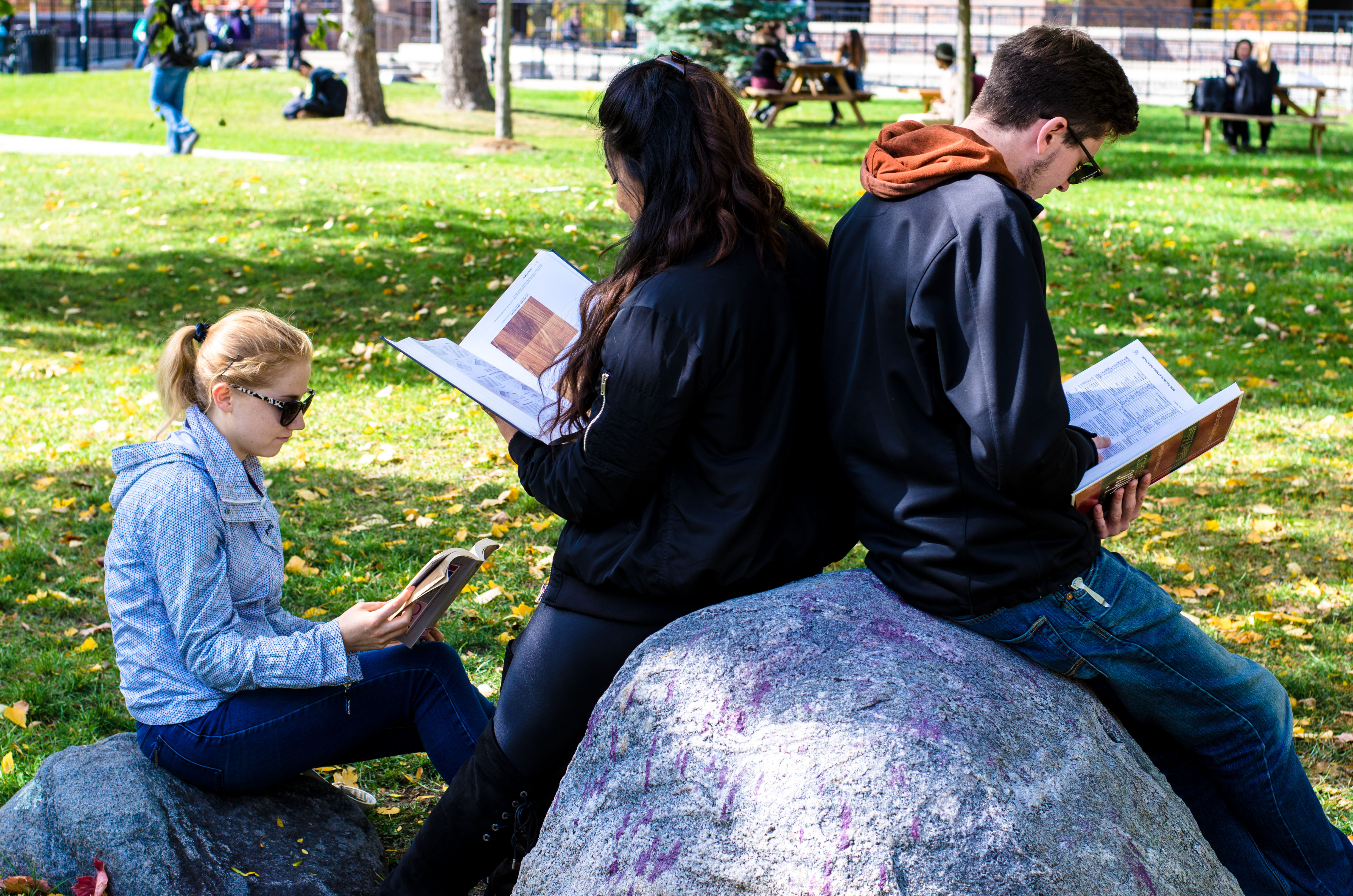An increasing number of universities across the country are introducing fall breaks for students.
While the length of the breaks vary from a full week to a number of days depending on the university, many institutions, such as the University of Waterloo (U of W), hope that the break days will facilitate better mental health for students.
“The University of Waterloo is keenly aware of the need to provide conditions that promote the physical and mental well-being of our students,” said Mario Coniglio, associate vice-president (academic) at the U of W. “The fall term is widely seen as a pressure cooker, especially in regards to transitioning issues and looming midterm exams for new incoming students.”
While Coniglio said improving mental health is often the rationale for implementing a fall break, he acknowledged that “hard data to support this assertion is lacking.”
Students at the U of W had two fall break days this year following the Thanksgiving holiday. Coniglio said discussions regarding the implementation of a fall break happened previously in 2009 and 2011, and “the time was right in 2014 to seriously revisit this issue at Waterloo.”
According to Chris Lolas, president of U of W’s Federation of Students, it was the school’s student union that initiated the campus conversation on fall break days.
“It grew from on-the-ground student feedback,” Lolas said. “Students said they wanted to see a break in the fall term, and then we brought the issue to the university. We were intimately involved every step of the way.”
The fall break days are the result of a successful referendum that took place in the fall of 2015, and will run as a pilot project at the university for three years, according to Lolas.
“We will review feedback after the pilot to determine if we should continue with the break,” Lolas said.
Coniglio added that U of W’s Student Success Office would assist in gathering data from staff, students, and faculty “to allow us to assess the benefits and any problems associated with the fall break.”
Carleton University had its first fall break week in 2014. The break became a permanent fixture at the university the following year with senate approval.
Queen’s University has recently formed a task force to consider introducing a fall break for students in the faculties of arts and science, engineering, commerce, and nursing. The task force is expected to deliver its recommendation in February 2017, according to the university’s website.
Both the University of Manitoba (U of M) and the University of Winnipeg implemented fall break periods for the first time this year. While the University of Winnipeg gave students a full week from Oct. 10 to 14, the U of M gave students two break days on Oct. 6 and 7.
“We looked at what was happening across the country, and we saw a trend,” said Jeremiah Kopp, president of the University of Manitoba Students’ Union (UMSU). Implementing a fall break at U of M was part of Kopp’s election team’s platform.
“When we were preparing to run in our student union elections, we thought, ‘what’s an idea that could really appeal to a broad swath of the student body at the university, from both a health perspective and a social perspective?’” Kopp said.
Once Kopp and the other members of his team were elected as UMSU executives, he said they began “working very closely” with the U of M’s registrar’s office in order to create potential schedules that could be brought forward for approval by the university senate.
“There was no formal consultation process with the student body because we ran on it during the election, so we took our election mandate as a signal that the students did in fact want that,” he said. “We really liked it from a mental health standpoint, and just from a practical student well-being standpoint.”
One of the challenges for administration in implementing a fall break is finding time in the school’s academic schedule. The U of M operates on a 13-week academic schedule, as opposed to the more common 12-week schedule.
“The plan is eventually to change it over to a 12-week academic schedule, so that there can be a full break week,” Kopp said.
According to Coniglio, the two break days at U of W are “as much as we could manage in our schedule.”
The U of W had to contend with a required number of teaching days and exam days, and wanted to avoid having to schedule exams on Sundays. The size of the university’s co-operative education program also posed a challenge, as Coniglio said “recruitment work during the fall term is the most challenging of the entire year.”
Nonetheless, Coniglio said he believes the fall break is a positive addition at U of W.
“I think it is great idea,” Coniglio said. “For our students, it is an opportunity at a critical time in the term to pause to reflect upon and catch up on their term’s work to date, and prepare for any upcoming mid-term assignments and assessments.”






